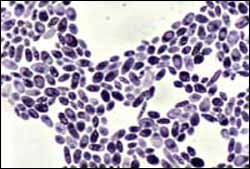The monoclonal antibody 473HD reacts with a glycosaminoglycan epitop selectively expressed on radial gliacytes of which a subpopulation shows stem cell…
A new adjuvant inducing an increased humoral and cellular immune response by enhancing antigen uptake and presentation.Further Information: PDF rubitec -…
Follow-up to landmark 2004 paper expands new understanding of female reproductive biology
Last year a group of Massachusetts General Hospital (MGH) researchers announced surprising findings that female mice – contrary to longstanding theories of mammalian reproductive physiology – retained the ability to make new egg cells or oocytes into adulthood. Now the same investigators report new data supporting the earlier research and identifying a potential source for the production of
Scientists from the Flanders Interuniversity Institute for Biotechnology (VIB) associated with the University of Antwerp have achieved a new breakthrough in their research on the origins of Alzheimer’s disease. Their alternative approach opens up new prospects for developing a treatment which can slow the disease’s progress. The researchers have shown that ´the plaques´ which form in the brain of patients are linked to damage to nearby blood vessels. Leakage appears to occur between the blood vesse
A gene that appears to help regulate normal embryonic development is found at high levels in virtually all forms of breast cancer, according to a new study led by Laszlo Radvanyi, Ph.D., associate professor of breast and melanoma medical oncology at The University of Texas M. D. Anderson Cancer Center.
The finding, published in the Aug. 2, 2005, issue of the Proceedings of the National Academy of Sciences and available on-line July 25, shows that the gene, normally made in small

An innovative new statistical method, described in the open-access journal PLoS Biology, streamlines the computation required to identify all the potential locations in the genome that influence a particular physical trait, or phenotype. Thanks to the new method developed by John Storey, Joshua M. Akey, and Leonid Kruglyak, researchers have a more efficient genome-mining technique to help them identify all the genomic elements that produce specific traits. In brewer’s yeast alone, Storey and collea